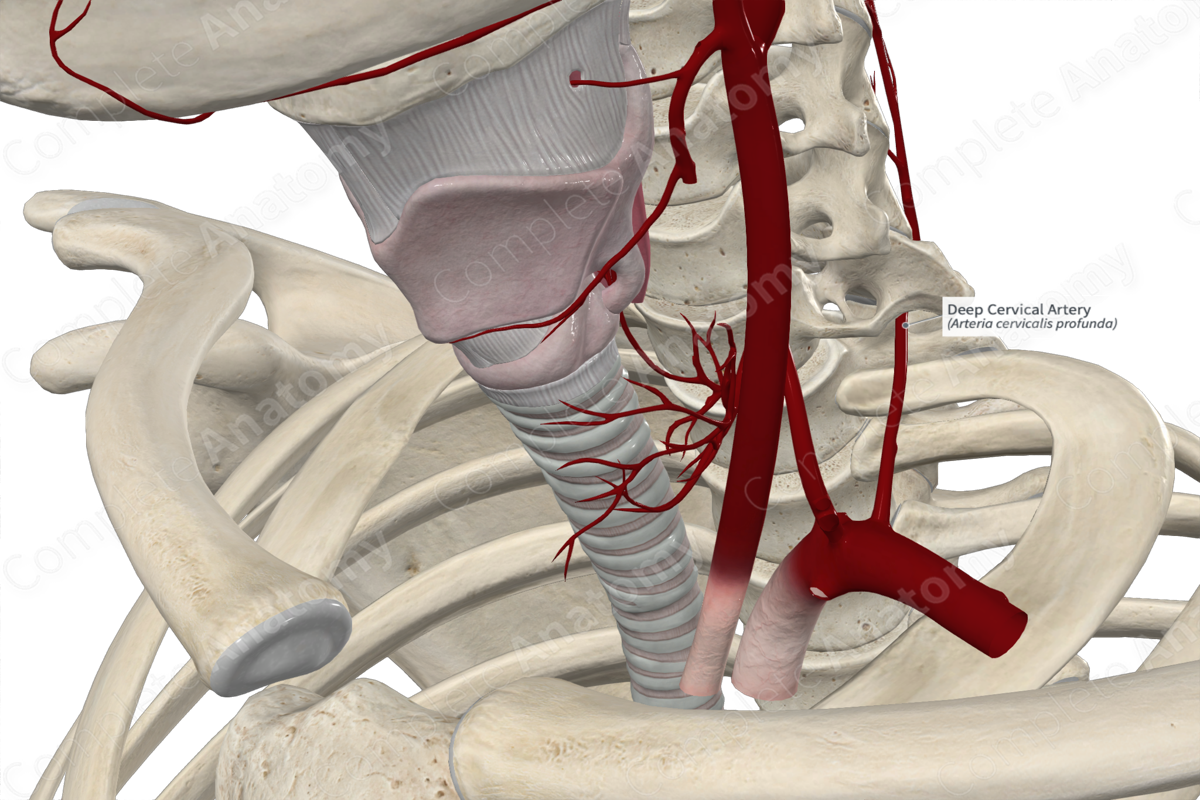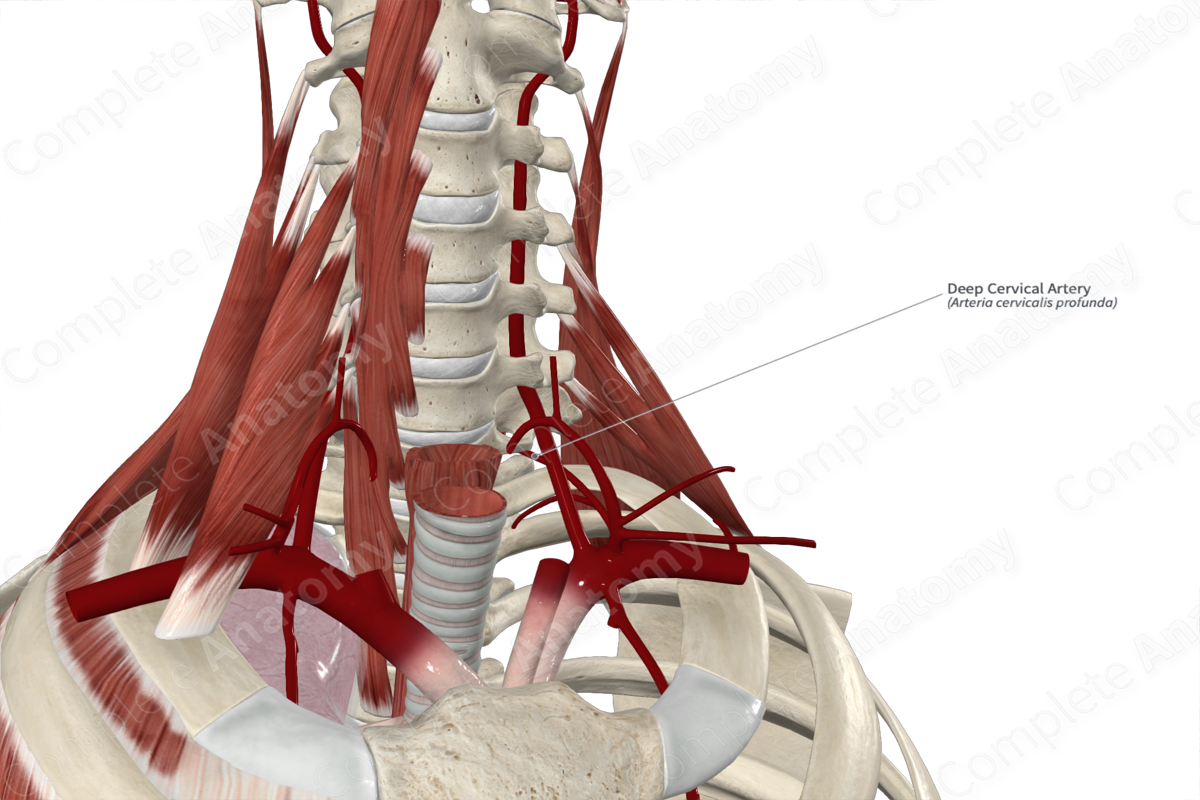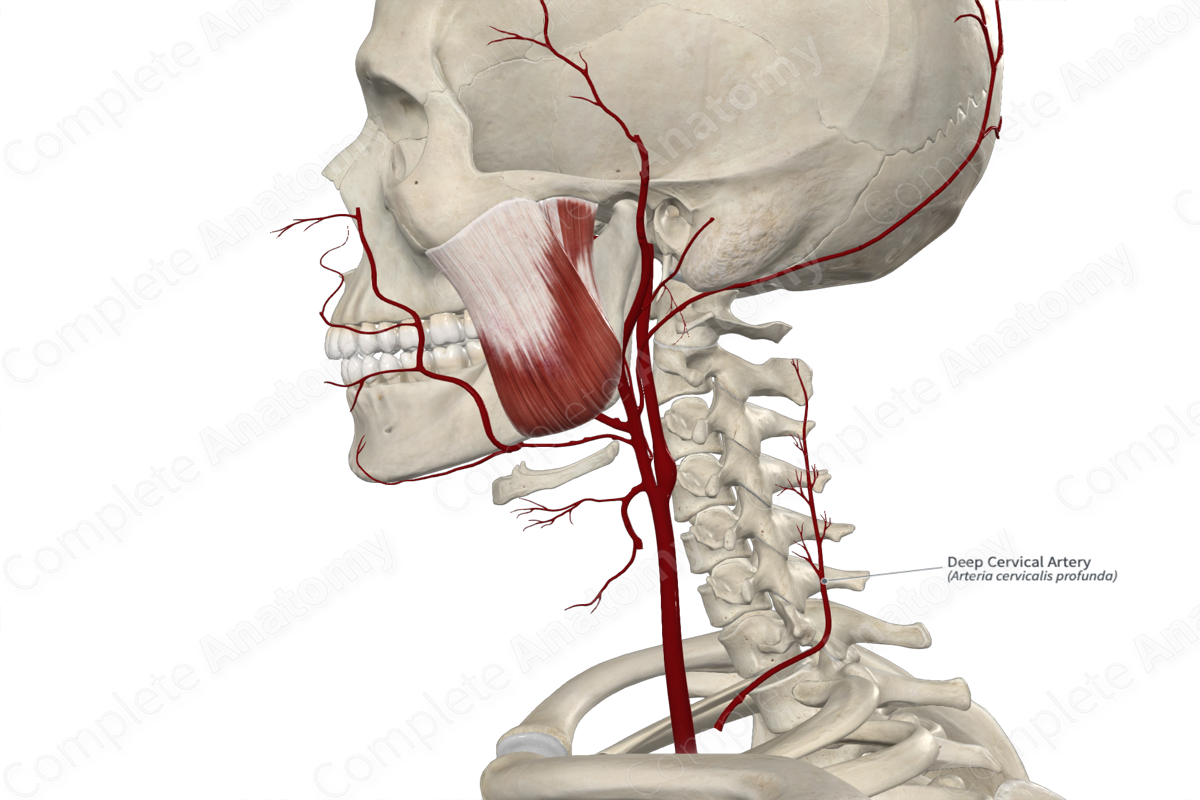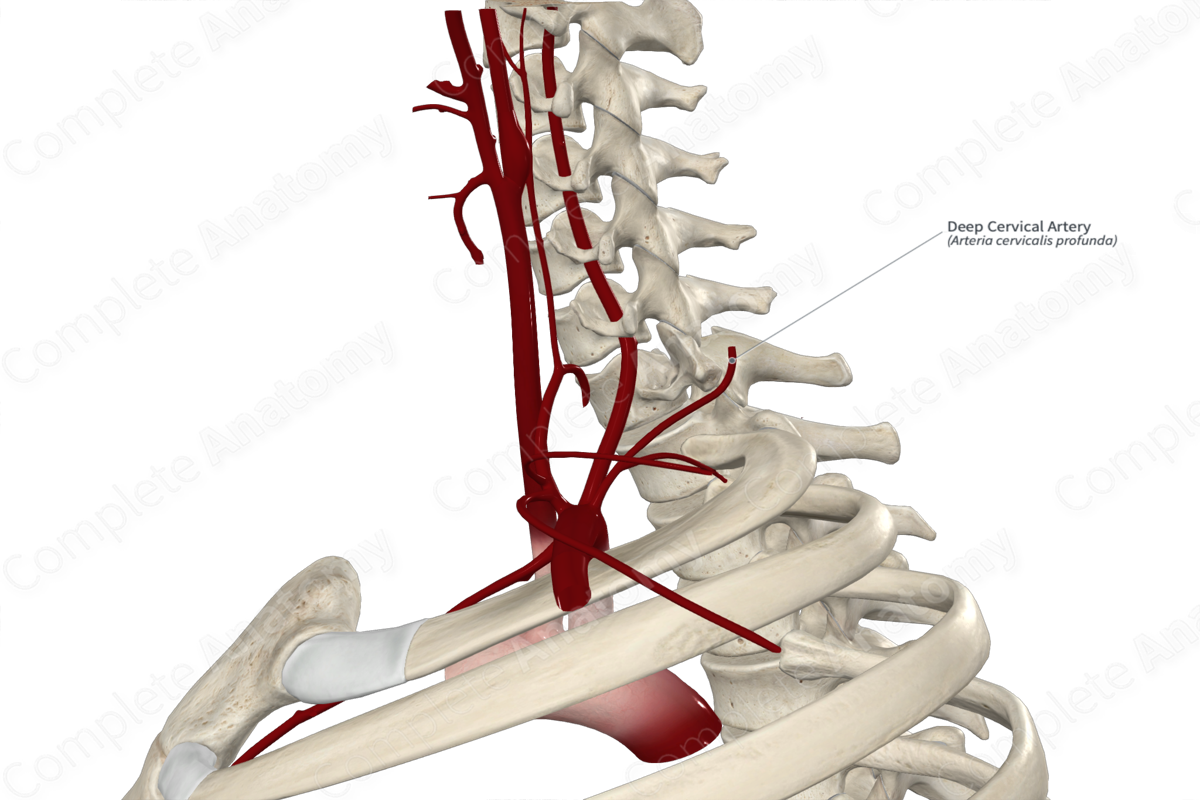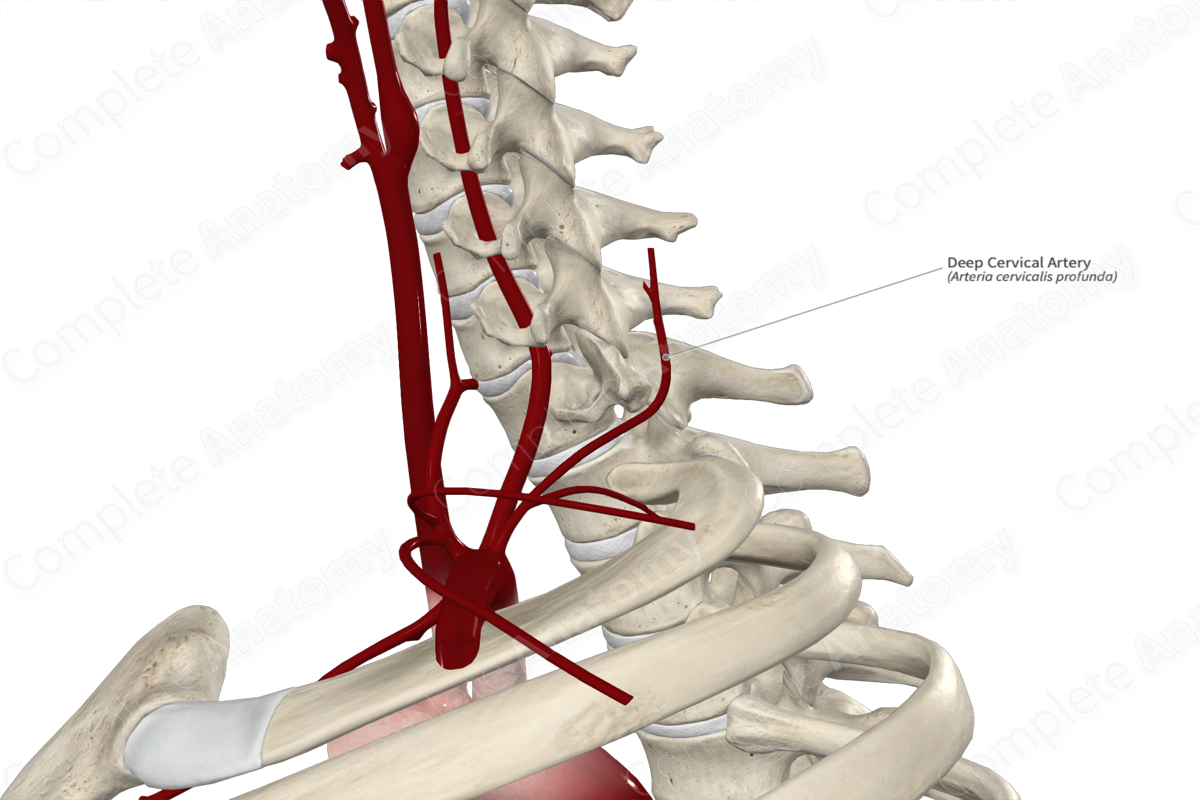
Quick Facts
Origin: Costocervical trunk.
Course: Travels posteriorly, superior to the first rib, then ascends to the level of second cervical vertebra.
Branches: Spinal branches.
Supplied Structures: Semispinalis capitis and semispinalis cervicis muscles, the spinal cord, and vertebral canal.
Related parts of the anatomy
Origin
The deep cervical artery originates as one of two terminal branches from the costocervical trunk, the other being the supreme intercostal artery. The artery can also arise directly from the second part of the subclavian artery in 8 to 10% of people (Tubbs, Shoja and Loukas, 2016).
Course
From its origin, the deep cervical artery travels posteriorly through the space between the neck of the first rib and the transverse process of the seventh cervical vertebra, superior to the eighth cervical nerve. It then travels superiorly to the level of the second cervical vertebra, between the semispinalis capitis and semispinalis cervicis muscles.
Branches
The deep cervical artery gives off a spinal branch that supplies the vertebral canal and spinal cord at the level of the seventh cervical vertebra. Along its course, the deep cervical artery anastomoses with the deep branch of the descending branch of the occipital artery.
Supplied Structures
The deep cervical artery supplies the semispinalis capitis and cervicis muscles. As it ascends, it also supplies the spinal cord and vertebral canal in the neck.
References
Tubbs, R. S., Shoja, M. M. and Loukas, M. (2016) Bergman's Comprehensive Encyclopedia of Human Anatomic Variation. Wiley.

